During the Vietnam War in the late 1960s and early 1970s, thousands of soldiers fought for the United States during an era when the nation was divided about the country's involvement in the conflict. Many of these soldiers became prisoners of war (POWs) and sadly, many were never heard from again.
One of those soldiers was Master Sgt. John Hartley Robertson. He was presumed dead after being captured in 1975 but miraculously found to be alive in 2008! But the happy homecoming wasn't what it seemed...
In 2008, A Missionary Heard Of A Strange Rumor
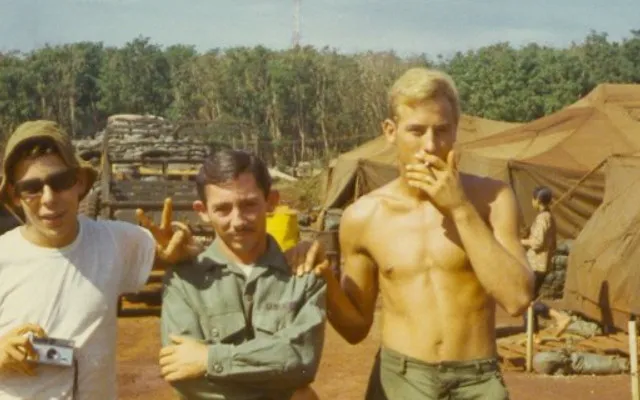
In spring 2008, a Christian missionary named Tom Faunce (who was a Vietnam veteran) went to Cambodia to help locals dig wells. He had survived two tours of duty, but not everyone he served with during his stint in the military was as lucky as he was. Faunce was greatly affected by the war and turned his energies towards religion and helping others around the world.
During a break from the well project, Faunce heard a rumor that an American Vietnam veteran had survived a helicopter crash in 1968 and will still alive. The man was reportedly living in Laos.
ADVERTISEMENT
A Marriage And A Name Change
ADVERTISEMENT
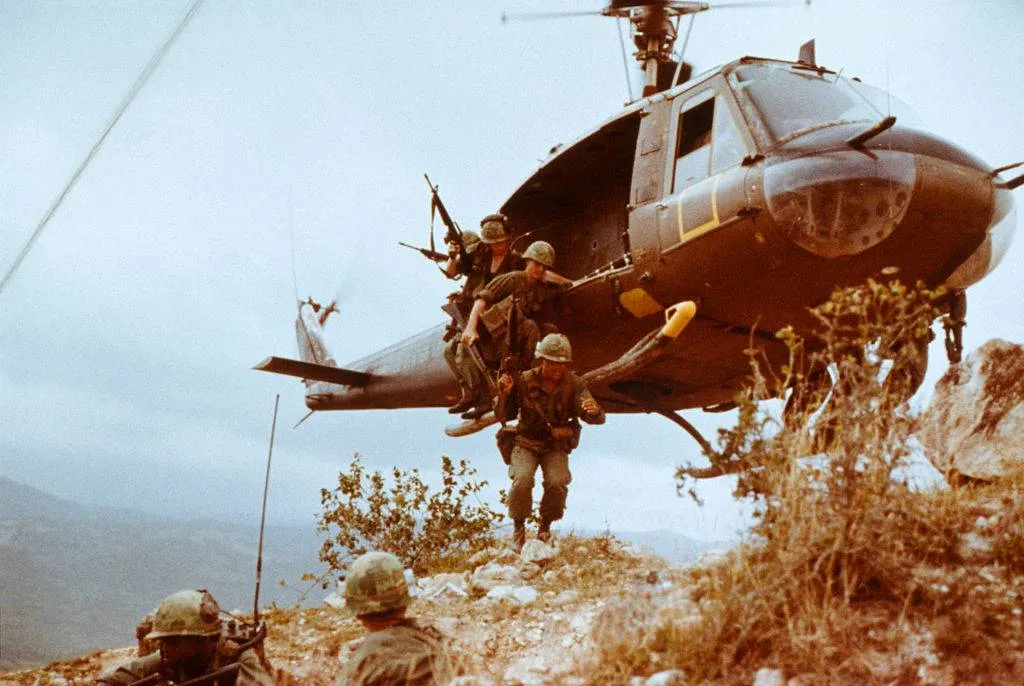
ADVERTISEMENT
Faunce found out that the American was a highly decorated Green Beret named John Hartley Robertson. Robertson was injured after his helicopter crashed and was sent to a North Vietnamese Army prison. While captive, Robertson married a nurse who cared for him.
ADVERTISEMENT
Once Robertson escaped from his prison, he stole the nurse's dead husband's ID and escaped to South Vietnam. Robertson changed his name to Dang Tan Ngoc. The story sounded quite unbelievable, yet Faunce gave it the benefit of the doubt. Soldiers subjected to stressful situations can behave in unusual ways and make decisions that perhaps they wouldn't in regular circumstances.
ADVERTISEMENT
"He's Not American, He's Vietnamese"
ADVERTISEMENT
ADVERTISEMENT

ADVERTISEMENT
Faunce needed to meet Robertson in person in order to verify his story, so he decided to visit his home. The man he met was very thin, about six feet tall, and sported thinning gray hair. Robertson welcomed Faunce into his home and invited him into the living room. Robertson knew why Faunce came to see him.
ADVERTISEMENT
While he was pleasant, his wife was not happy. She was shocked by the visitor and yelled angrily in Vietnamese: "He's not American. He's Vietnamese!" Robertson took his wife aside, and when they came back she told Faunce why she was so afraid.
ADVERTISEMENT
Secret Work With The CIA
ADVERTISEMENT
ADVERTISEMENT

ADVERTISEMENT
The wife revealed that she was worried that her family would pay the consequences if people discovered she had smuggled Robertson out of prison so many years earlier. Over the next several hours, Robertson opened up to Faunce and talked about his time in the military. After graduating from high school in Alabama, Robertson joined the Green Berets.
ADVERTISEMENT
He trained as a paratrooper, and in the mid-1960s he was recruited by the CIA in a top secret position and helped bomb North Vietnam. Robertson and others worked with the agency in Laos and Cambodia, executing sensitive search-and-destroy reconnaissance missions.
ADVERTISEMENT
Unlucky Mission
ADVERTISEMENT
ADVERTISEMENT

ADVERTISEMENT
While Robertson was good at his job, he was unable to escape enemy fire while flying in a helicopter over the South Asian jungle in 1968. The helicopter was struck, and as it began to spiral towards the ground, most of the soldiers were ejected. Robertson, however, got stuck inside. This probably saved his life.
ADVERTISEMENT
He survived the crash, but he was not in good shape. His bruised and injured body was transported to a Vietcong hospital. That is where he met his future wife. Then Robertson began the next chapter of life as a Vietnamese farmer in rural Laos.
ADVERTISEMENT
Missing & Presumed Dead
ADVERTISEMENT
ADVERTISEMENT
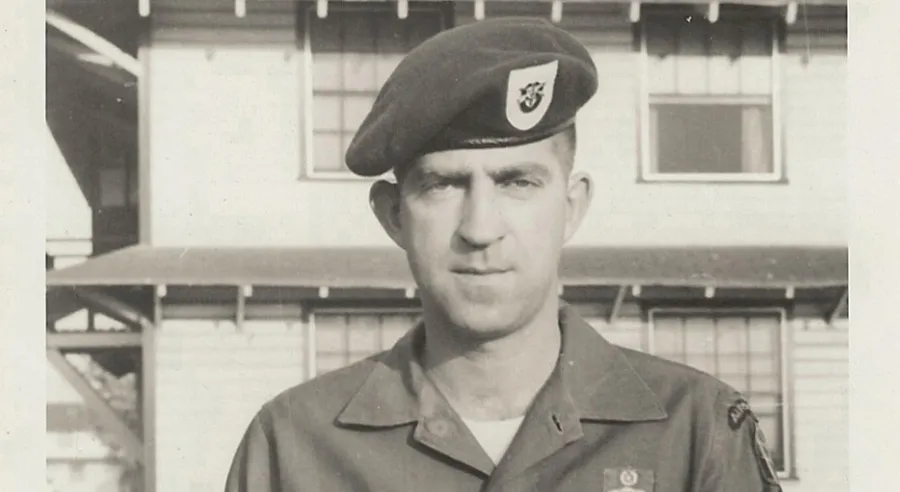
ADVERTISEMENT
Those who were unlucky enough to be captured were often starved, tortured, and sometimes killed by the Vietcong. When the war ended in 1975, many of the POWs were released. Still, others remained missing and were presumed dead, including Special Forces Green Beret Master Sgt. John Hartley Robertson.
ADVERTISEMENT
Robertson claimed that after his escape, he did his best to survive in the jungle until eventually it just became a new way of life.
ADVERTISEMENT
Robertson's Foggy Memory
ADVERTISEMENT
ADVERTISEMENT
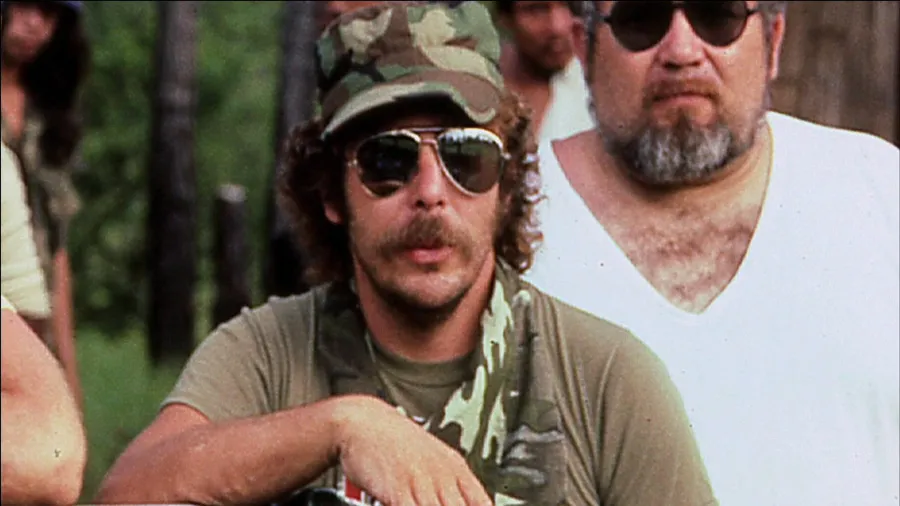
ADVERTISEMENT
Jorgensen wrote, directed and produced the 2013 Canadian documentary Unclaimed about the former Special Forces Green Beret. Faunce was the one who convinced the filmmaker to make the documentary and to help Robertson reunite with his family. In the film, Robertson discussed being shot down over Laos during a classified mission.
ADVERTISEMENT
He explained that he lived in a bamboo cage in the Vietnamese jungle and claimed he was tortured for more than a year before he was sent to the hospital. The strange thing was that Robertson spoke only Vietnamese and didn't remember his children's names or his own birthday.
ADVERTISEMENT
Digging Into Robertson's Disappearance
ADVERTISEMENT
ADVERTISEMENT

ADVERTISEMENT
Jorgensen made sure he researched everything he could about John Hartley Robertson prior to making the film. He told IndieWire.com in 2014: "I did a lot of research about this mission and the MACV-SOG Organization that the Pentagon put together in January of '64.
ADVERTISEMENT
Then I tried to find everything I could about this missing man, and what was known about him. That was really a black hole. He disappeared; there are no files about this guy at all. There are a couple of statements by people who were in the air or on the ground when his helicopter went down, pretty minimal."
ADVERTISEMENT
Returning Home
ADVERTISEMENT
ADVERTISEMENT
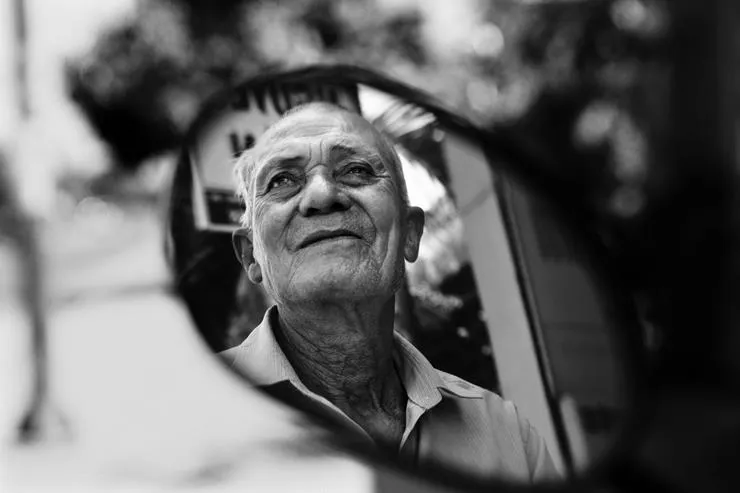
ADVERTISEMENT
During their visit, Robertson asked Faunce if he knew what happened to his family back home. Faunce was unable to answer his questions. He wanted to help Robertson and asked him to go to the United States embassy and get fingerprinted to confirm his identity.
ADVERTISEMENT
Once Robertson proved who he was, he would be able to reconnect with his loved ones. Things didn't get rolling until 2012 when a filmmaker, Emmy Award-winning director Michael Jorgensen, sent someone to Vietnam to bring Robertson to Canada to reunite with his sister, who was eager to see her long-lost brother after almost 45 years.
ADVERTISEMENT
Family Reunion
ADVERTISEMENT
ADVERTISEMENT

ADVERTISEMENT
In order to reunite with her brother, Robertson's sister, Jean, her husband, and her daughter Gail flew from their home in Tuscaloosa to Canada to see him. The last time Gail saw her uncle was during her 10th birthday party. Robertson was reunited with his family on Dec. 17, 2012. He had such trouble with English that he needed a translator to help communicate with his family.
ADVERTISEMENT
To those who loved him, Robertson seemed like a completely different person. In fact, prior to seeing his family, there was some skepticism that he was the person he claimed to be. Then the fingerprint results came back.
ADVERTISEMENT
Fingerprint Results
ADVERTISEMENT
ADVERTISEMENT
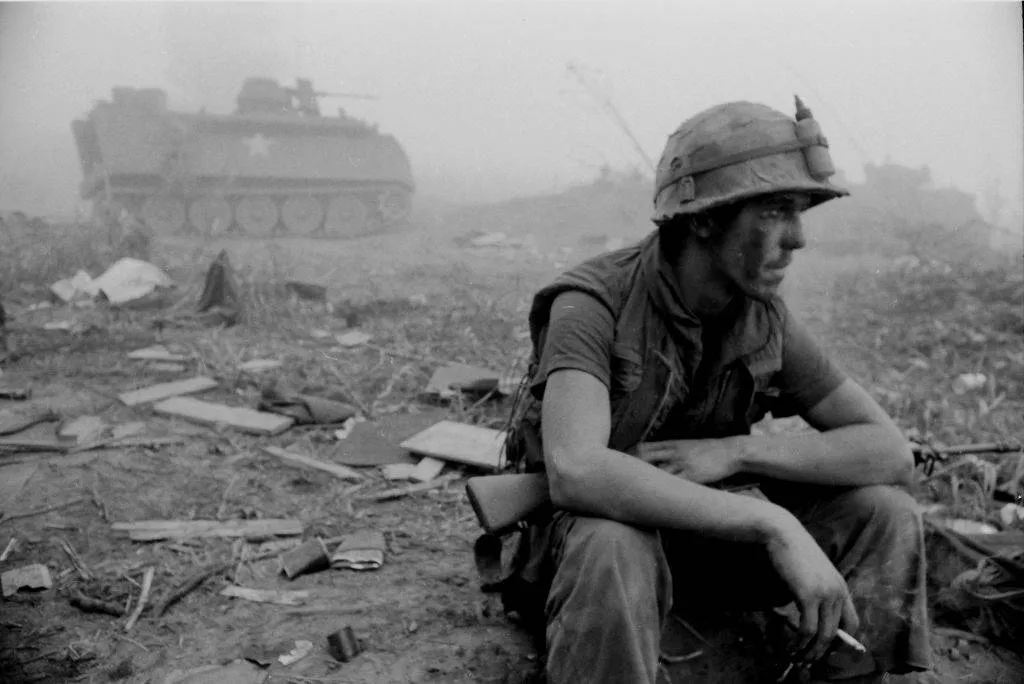
ADVERTISEMENT
Shockingly, the fingerprints didn't match. It was speculated that he had gotten his name wrong and wasn't really John Hartley Robertson. Maybe he was a different long-lost soldier? There was very little evidence to support either claim, so it was assumed he was the real Robertson. Faunce and Jorgensen decided to test his credibility by reconnecting the man from Vietnam with one of his old Green Beret buddies, Ed Mahoney.
ADVERTISEMENT
Mahoney was eager to meet up with Robertson after he learned that he was still alive and survived the helicopter crash in 1968. But if he seemed different to his family would he seem different to a fellow soldier?
ADVERTISEMENT
DNA Test
ADVERTISEMENT
ADVERTISEMENT

ADVERTISEMENT
Jorgensen filmed their meeting at a restaurant in Dong Nai. When they met, the pair exchanged an awkward hug. Their conversation was then translated in English and Vietnamese so they could understand one another. Mahoney, who served with Robertson and knew him well, believed unequivocally that it was John Hartley Robertson.
ADVERTISEMENT
However, the fingerprint information and Robertson's strange family reunion spurred the family in Canada to truly find out if the man from Vietnam was actually who he said he was. In order to find out the truth, they decided to get a DNA test.
ADVERTISEMENT
The Hard Truth
ADVERTISEMENT
ADVERTISEMENT

ADVERTISEMENT
Before the film premiered, Jorgensen told the media that Robertson's American wife and two children had initially agreed to do a DNA test but later decided not to. While it seems a little bizarre that they didn't want to know the truth, the filmmaker explained, "Somebody suggested to me maybe that's (because) the daughters don't want to know if it's him."
ADVERTISEMENT
"It's kind of like, that was an ugly war. It was a long time ago. We just want it to go away... I don't know. What would compel you not to want to know if this person is your biological father?"
ADVERTISEMENT
Not Robertson
ADVERTISEMENT
ADVERTISEMENT

ADVERTISEMENT
When the documentary was released, many people, including the family, had convinced themselves that the man from Vietnam was, in fact, Robertson. They held off on a DNA test because they wanted to believe their beloved father/brother/uncle was alive. But science does not lie, and when the DNA tests came back they proved that the man was not who he claimed to be.
ADVERTISEMENT
Before the results were made public, Robertson's niece, Gail Metcalf, daughter of Robertson’s sole surviving sister, Jean Robertson-Holley, said of the situation, "The bottom line is even if the DNA test came back negative, he’s still proven to be an American. My mother will never believe he is not her brother."
ADVERTISEMENT
Seeking The Truth
ADVERTISEMENT
ADVERTISEMENT
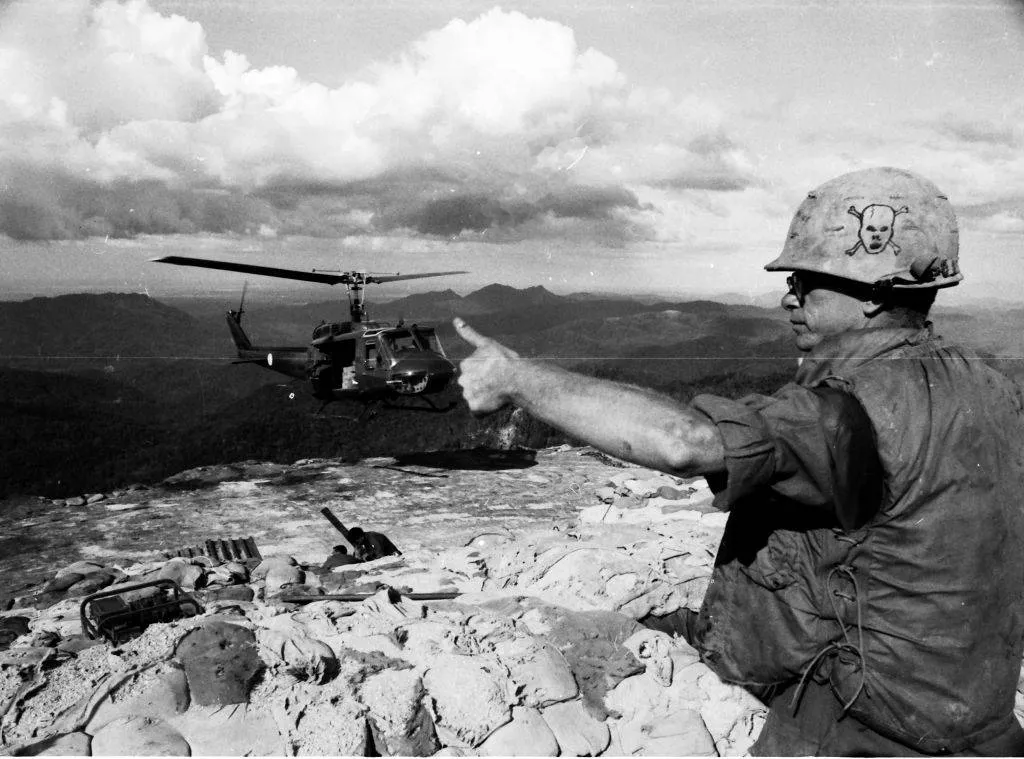
ADVERTISEMENT
An Alabama-based forensics laboratory used a sample from Robertson’s nephew with a blood stain collected from the man from Vietnam to test the DNA. Robertson's other niece, Cyndi Hanna, revealed on her GoFundMe website that helped raise money for the test: “We have received the results of the [nuclear] DNA test, and sadly there was NOT a match. This is very disappointing.”
ADVERTISEMENT
Gail Metcalf added, "As my mother has said, we only want to do right by my Uncle John, and if that means exploring the possibility that the U.S. government has made a mistake or that the man claiming to be my uncle is actually another lost American and doesn’t know who he is, we intend to seek the truth on our own terms.”
ADVERTISEMENT
Government Interference
ADVERTISEMENT
ADVERTISEMENT

ADVERTISEMENT
The U.S. government wasn't very helpful to Jorgensen in finding the truth about Robertson. He told IndieWire.com: "The contact that I worked with in the government was very deceitful. I think they were trying to steer us clear of even doing this story. As we were just about to finish the film, even before Tom’s team had found John’s sister – because they had a really hard time trying to find his relatives – the government had told us that they had gotten blood samples from a brother and sister and that they were doing DNA tests.
ADVERTISEMENT
That was totally untrue, his brother was dead at the time and his sister has never been contacted by the government."
ADVERTISEMENT
One Big Scheme
ADVERTISEMENT
ADVERTISEMENT

ADVERTISEMENT
Just one day after Jorgensen's film premiered, The Independent reported that the man who claimed to be Robertson was, in reality Dang Tan Ngoc, "a 76-year-old Vietnamese citizen of French origin who has a history of pretending to be US army veterans".
ADVERTISEMENT
The Independent had discovered a memo from a 2009 report from the Defense Prison of War/Missing Personnel Office about Ngoc, who as early as 1982 Ngoc claimed to be Robertson. The Independent reported Ngoc had been impersonating Robertson for years with "some Vietnam War veterans saying he could have possibly conned veteran groups out of thousands of pounds over the last 30 years."
ADVERTISEMENT
A Tooth Reveals More Clues
ADVERTISEMENT
ADVERTISEMENT

ADVERTISEMENT
While filming Unclaimed, the man who claimed to be Robertson removed one of his teeth and gave it to Faunce and the filmmakers. This helped determine the man's genetic makeup. Lesley Chesson, a senior scientist at Salt Lake City’s IsoForensics Inc., analyzed the tooth and said it was "very likely" that the person who possessed it had grown up in the United States.
ADVERTISEMENT
Tooth enamel includes chemicals that can reveal many things, such as the climate and geology of a region where a person grew up. So while the man may not have been Robertson, it appeared he was probably American.
ADVERTISEMENT
Still Questions
ADVERTISEMENT
ADVERTISEMENT

ADVERTISEMENT
However, it's not 100 percent certain that Ngoc is American after testing just one of his teeth. A Stars and Stripes article pointed out that the isotope results from the tooth also match other parts of the world in addition to the United States. If two teeth were tested it would be a better indication that a person grew up in a particular geographic area.
ADVERTISEMENT
By just testing one tooth, you can't eliminate the possibility that the individual moved around when he was a child. That one tooth could happen to match a place in the United States, but what about the other teeth?
ADVERTISEMENT
Corrupt MIA Agencies
ADVERTISEMENT
ADVERTISEMENT
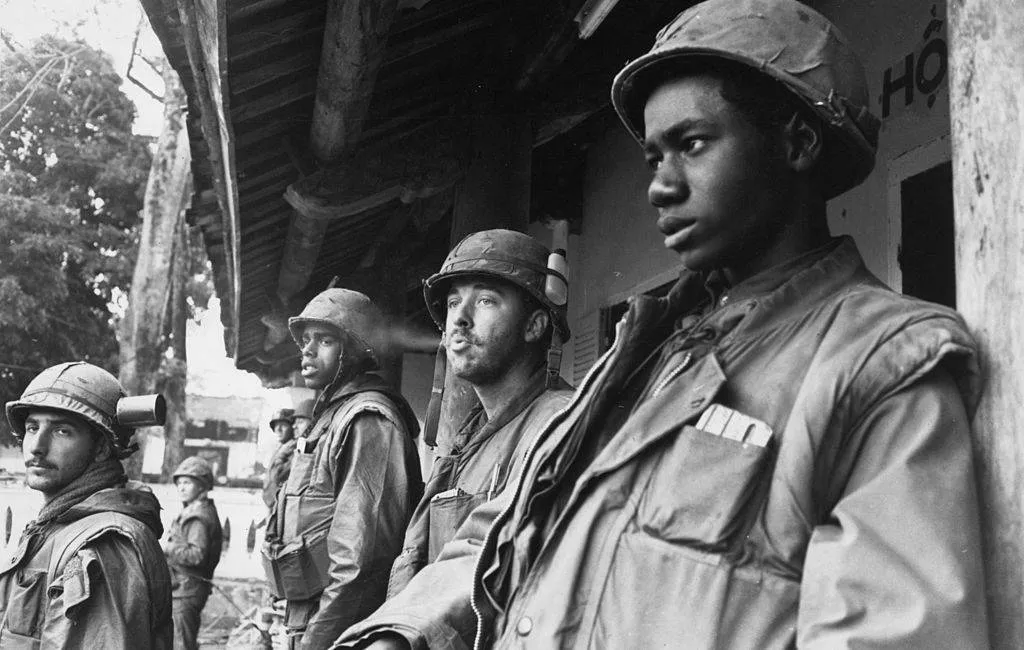
ADVERTISEMENT
It's unclear who Ngoc actually is, but it appears that the U.S. government is trying to overhaul its MIA agencies to help families learn more about their loved ones. Jorgensen told IndieWire.com, "I think it’s always the fallback position of the government, to deny and to try to let it go away rather than to face the issues.
ADVERTISEMENT
But as you can see at the end of the film, shortly after the film screened at the Hot Docs Festival in Toronto, the government launched a very large investigation into their own MIA agencies calling them 'dysfunctional, inept, and potentially fraudulent', and that‘s in regard to more than 83,000 cases since WWII. That’s shocking."
ADVERTISEMENT
The Incredible Story of POW U.S. Navy Aviator Dieter Dengler
ADVERTISEMENT
ADVERTISEMENT
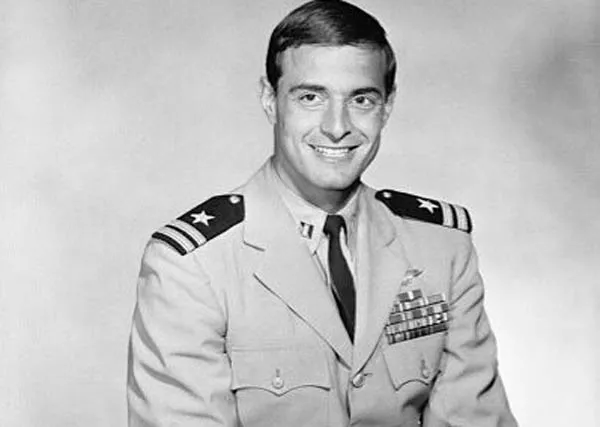
ADVERTISEMENT
Dieter Dengler was in the United States Navy during the Vietnam War. In 1966, Dengler had his first mission, which was top-secret. His plane was shot down and he was presumed dead or captured for six months. This is his story.
ADVERTISEMENT
Dengler grew up in wartime Germany, and it was then he had his first encounter with an Allied plane. He was with his little brother in the attic of his house when he looked out the window to see an Allied fighter pilot close by. Dengler recalls this as the moment he knew what his calling was. As a teenager, he emigrated to America and signed up to be in the U.S. Navy as a pilot, and was assigned to an aircraft carrier for Vietnam. On February 1, 1966, just after his engagement, he launched off of the U.S.S. Ranger for his first mission ever.
ADVERTISEMENT
Shot Down By Enemy Aircraft
ADVERTISEMENT
ADVERTISEMENT

ADVERTISEMENT
Dengler was with three other planes on the mission. About two and a half hours into their flight over enemy territory, Dengler's right wing was shot down by enemy aircraft. His plane tumbled through the sky and he eventually crash-landed in a clearing. Upon impact, Dengler was thrown 100 feet from the aircraft and was knocked unconscious.
ADVERTISEMENT
After some time, he woke up and fled into the jungle. He spent two days in the jungle, using bamboo to support his injured left leg. He was soon found by the local Pathet Lao, the Laotian equivalent of the communist Viet Cong.
ADVERTISEMENT
Taken Prisoner and the Torture Begins
ADVERTISEMENT
ADVERTISEMENT

ADVERTISEMENT
After he was captured, he was marched through the jungle with no consideration of his left leg. At night, he was tied down spread-eagle on the ground to stop him from escaping. His face became so swollen by mosquito bites that he could barely see. On one occasion, Dengler attempted to escape and he was discovered by a nearby watering hole.
ADVERTISEMENT
He recalls this moment being when the true torture began. They wanted to teach him a lesson, so they hung him upside down and covered his face with biting red ants until he fell unconscious, and at night put him in a freezing well so if he fell asleep he would drown.
ADVERTISEMENT
Pushing the Limits of Dengler's Patriotism
ADVERTISEMENT
ADVERTISEMENT
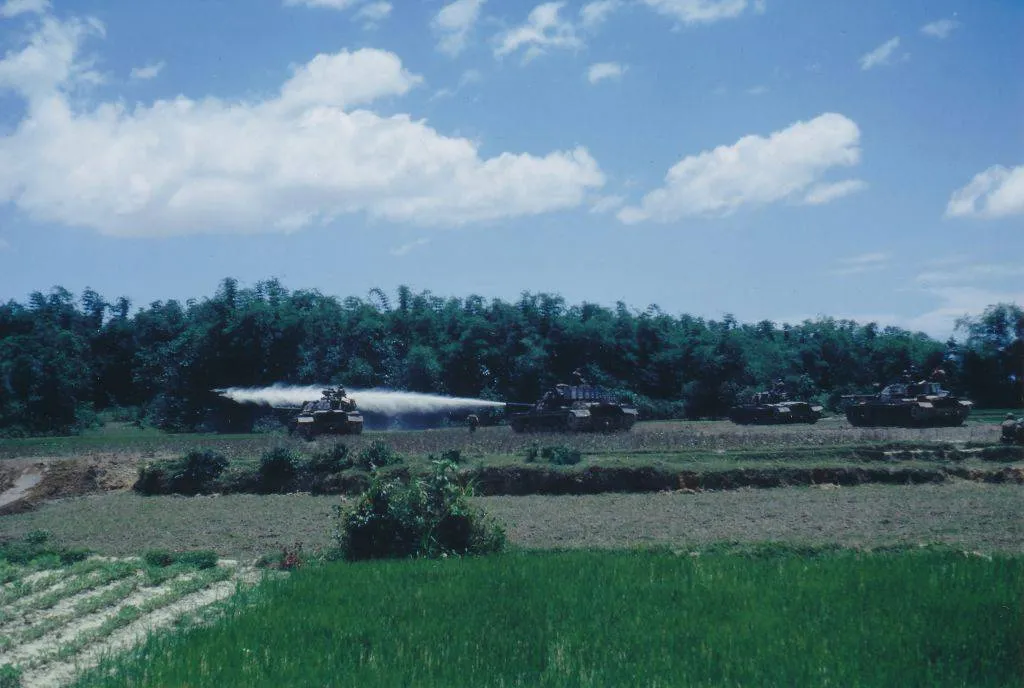
ADVERTISEMENT
In an attempt to further break his spirit, he was dragged by water buffalo through villages while people laughed and spat at him and urged the buffalo to go faster. He was then sent to officials and asked to sign a document condemning the United States.
ADVERTISEMENT
However, he recalled his grandfather refusing to vote for Hitler in Germany for which suffered the consequences, so Dengler refused as well. From his response, the torture only intensifies and wedges of bamboo were put under his fingernails and they riddled his body with small incisions to make the wounds fester.
ADVERTISEMENT
"They Were Always Thinking of Something New To Do To Me"
ADVERTISEMENT
ADVERTISEMENT

ADVERTISEMENT
But the torture didn't stop there, instead, it just got more and more creative. Dengler recalls them testing to see what they could do to push the limits. One guard tied a rope around Dengler's arm, slid a piece of wood in between his arm and the rope and tightened it his nerve was cutting against his bone, making his hand unusable for six months.
ADVERTISEMENT
He was then handed over to the more brutal Vietcong who even cut off one of their own soldier's fingers in front of Dengler because he stole Dengler's wedding ring without permission to do so. It was then Dengler knew not to mess with the Viet Cong.
ADVERTISEMENT
Dengler Arrives at His New "Home"
ADVERTISEMENT
ADVERTISEMENT

ADVERTISEMENT
After weeks with the Laotians and now in the hands of the Viet Kong, Dengler finally arrived at his destination which was a prisoner of war camp. Dengler was looking forward to it, to be out of the jungle, hopefully with other pilots, and even the possibility of being treated with some ounce of humanity.
ADVERTISEMENT
However, what he saw entering the camp was far worse than anything he could have imagined. Upon arrival, the first thing he saw was a soldier stumbling around, holding his intestines in his hands.
ADVERTISEMENT
Dengler Meets His New Best Friends
ADVERTISEMENT
ADVERTISEMENT
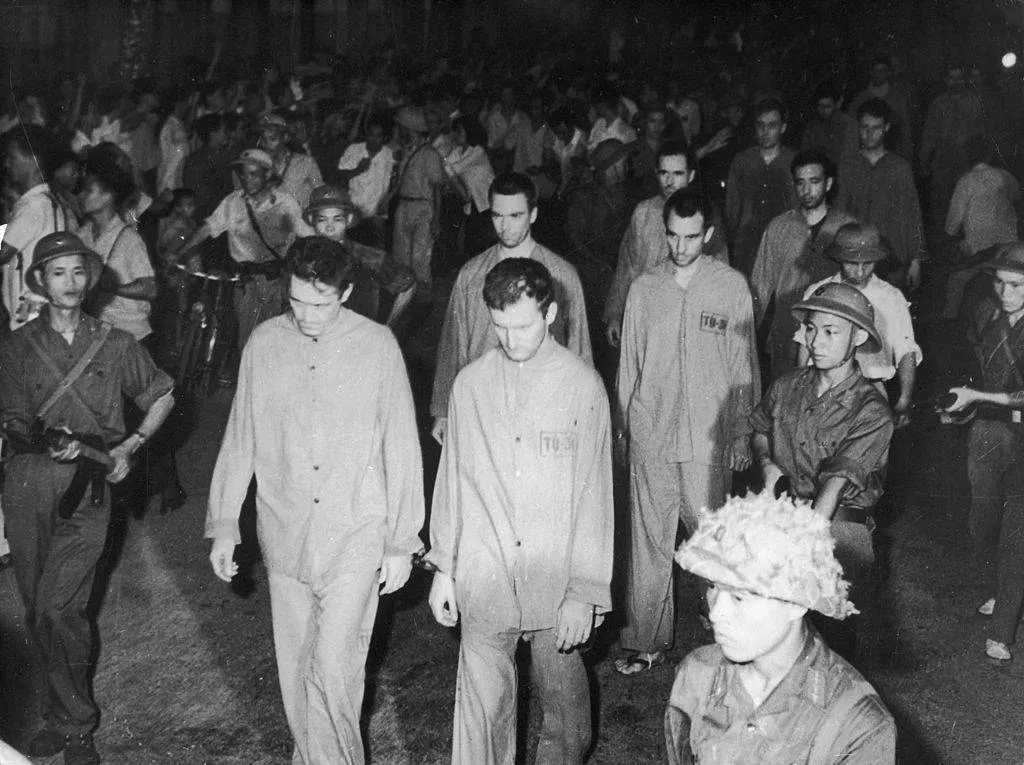
ADVERTISEMENT
There were six other captives at the camp. Four Thais and two fellow Americans named Duane Martin and Eugene DeBruin. One of the Americans had no teeth and an awful infection in his mouth after he begged the others to knock out his teeth out with a rusty nail and a rock to relieve the puss in his gums.
ADVERTISEMENT
Dengler learned that the six had been there for two and a half years and that he would look no different from them if he didn't get out of the camp.
ADVERTISEMENT
Things Only Got Worse
ADVERTISEMENT
ADVERTISEMENT
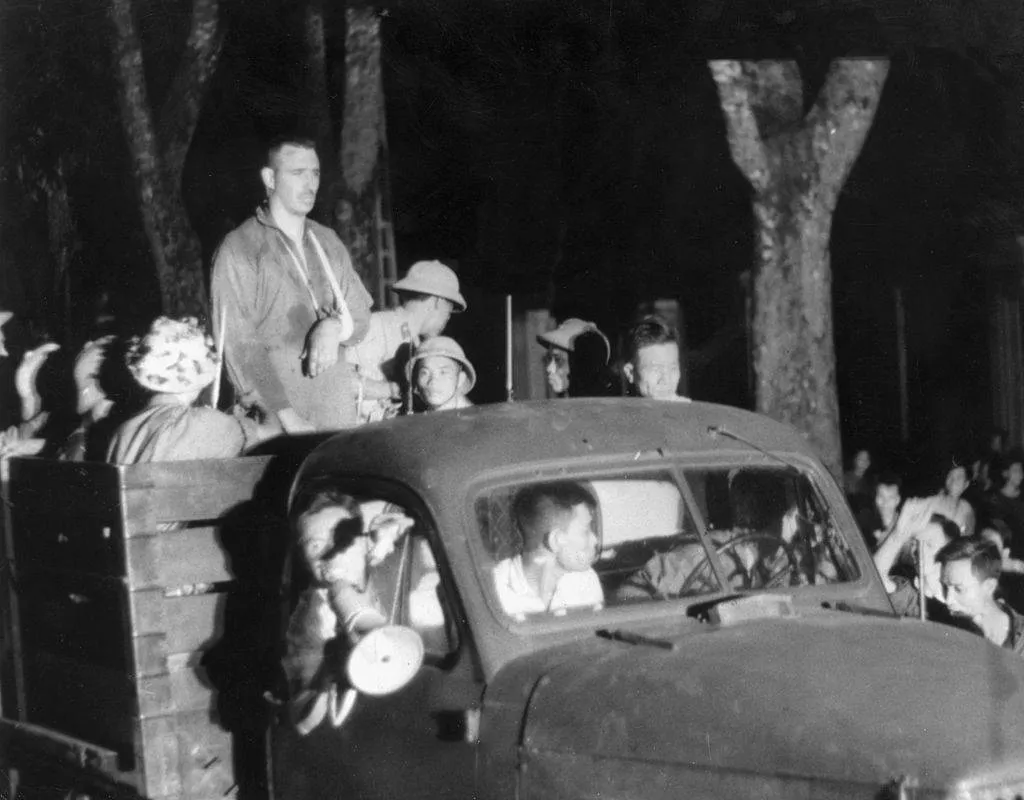
ADVERTISEMENT
Over time, tensions began to grow among the prisoners, as their conditions and wounds became worse, and they began to run out of food. The group was only given one handful of rice to share amongst themselves which they had to equally divide and conserve. Yet, the most important tactic was that they stayed together because they were doomed if they began to fight amongst themselves.
ADVERTISEMENT
In addition to the rice, they were given the grass from the stomach of a deer, while the guards ate the meat in front of them. Occasionally they would find snakes in the latrines to eat or rats that they speared in their hut.
ADVERTISEMENT
Horrible Nights in the Camp
ADVERTISEMENT
ADVERTISEMENT
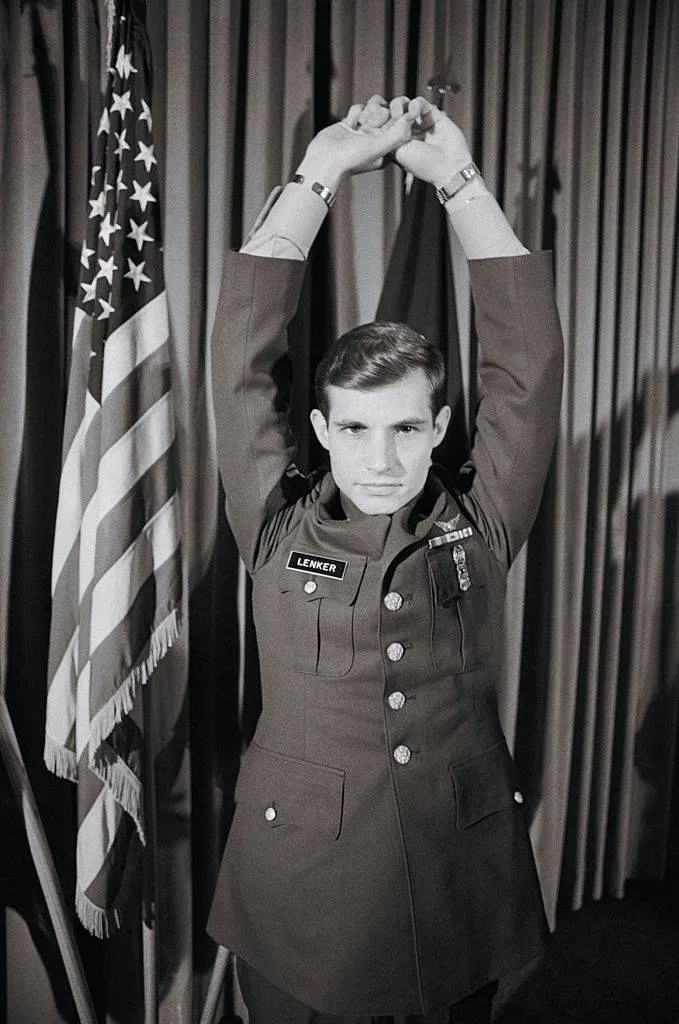
ADVERTISEMENT
Night time brought a whole new set of horrors for Dengler and his fellow prisoners. In their hut, the men were handcuffed together and their feet were locked into medieval style woodblocks. They also all were sick with chronic dysentery and weren't allowed to get up and go to the bathroom which meant they spent the majority of their nights sleeping on their own, as well as their other prisoner's excrement.
ADVERTISEMENT
This only made their infections worse and was heavy on their morale. It's almost unimaginable to think that anyone, even prisoners of war, were treated this way.
ADVERTISEMENT
An Overheard Plan to be Executed
ADVERTISEMENT
ADVERTISEMENT

ADVERTISEMENT
These atrocities continued for several months. During that time, the prisoners created a meticulous plan of how to escape by mapping out the camp, timing the guards, and learning where the guns were kept up. They had everyone in the camp's routine memorized to the smallest details and to the last second. One night, one of the Thai prisoners overheard the guards talking.
ADVERTISEMENT
The guards were discussing how they were starving as well and wanted to go back to their own villages so they were going to march the prisoners into the jungle and execute them and say that they were trying to escape. The prisoners knew that this was the time to put their plan into action.
ADVERTISEMENT
The Plan
ADVERTISEMENT
ADVERTISEMENT

ADVERTISEMENT
The group knew that the best time to escape was right at the time when the guards put down their guns around 4 PM to get their evening meal. The whole process took the guards a total of two and a half minutes. This meant that was all the time the prisoners had to escape from their hut, steal the guns, and take over the camp without firing a shot.
ADVERTISEMENT
Every prisoner had their assigned task which needed to be executed correctly for the plan to work. Weeks before, the group had managed to loosen up a support pole to escape the shelter as well, so everything was in place. After a few evenings of calling off the escape, the time finally arrived.
ADVERTISEMENT
The Escape
ADVERTISEMENT
ADVERTISEMENT

ADVERTISEMENT
On June 29, 1966, the group waited until the exact second when it was time to hatch their plan. Dieter loosened the hut's poles and climbed out the opening. He went over to the guard tent and managed to get his hands on three machine guns which he took along with a few extra magazines. While everyone else was making their calculated movements around the camp, the guards realized something was wrong.
ADVERTISEMENT
They all began scrambling and one even shot at Dengler. Dengler managed to kill five guards while one got away. Now, they had to abandon their plan of a quiet escape and grab whatever supplies they could and run through the jungle.
ADVERTISEMENT
Betrayal and a Final Goodbye
ADVERTISEMENT
ADVERTISEMENT

ADVERTISEMENT
The Thais had taken almost all of the equipment that was meant to be shared, including Dengler and Duane's boots as well as mosquito nets and run off together. Gene, one of the other Americans refused to run away with Dengler and Duane in order to stay with his sick Thai friend Y.C, whom Gene developed a relationship with during their imprisonment.
ADVERTISEMENT
Duane and Dengler then said their goodbyes, leaving Gene with a sub-machine gun. Dengler and Duane then headed west towards Thailand and soon after were completely lost.
ADVERTISEMENT
Dengler and Duane vs. The Jungle
ADVERTISEMENT
ADVERTISEMENT
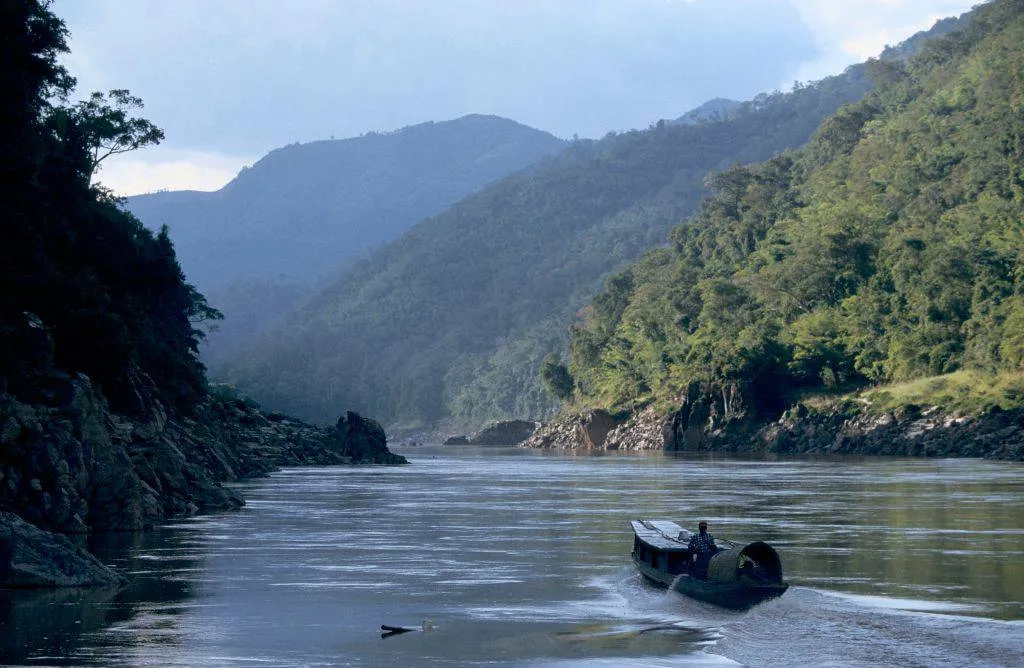
ADVERTISEMENT
Barefoot, sick, bloodied, and exhausted, the two ran through the jungle. The pair found the sole of an old tennis shoe and traded off wearing it for some limited respite from their pain. Finally, they found a river which they knew would eventually flow into the Mekong River, and then the border of Thailand where then, at last, they would be safe.
ADVERTISEMENT
They built a raft and battled the river while hiding from their pursuers. In the morning, they were both weak and covered in mud and leeches.
ADVERTISEMENT
A Not So Welcoming Encounter
ADVERTISEMENT
ADVERTISEMENT

ADVERTISEMENT
After their night on the river, the two reached the bank of the river and were so exhausted that they could barely crawl out of the water. When they reached the top of the ridge overlooking the water, they stumbled upon a settlement.
ADVERTISEMENT
However, the villagers were not as excited to see them as Duane and Dengler were to see them. The two were surrounded by villagers as they pleaded for help. One of the villagers wielding a machete chopped at Duane's leg badly wounding him. He then swung the machete again and beheaded him.
ADVERTISEMENT
The Final Stretch
ADVERTISEMENT
ADVERTISEMENT
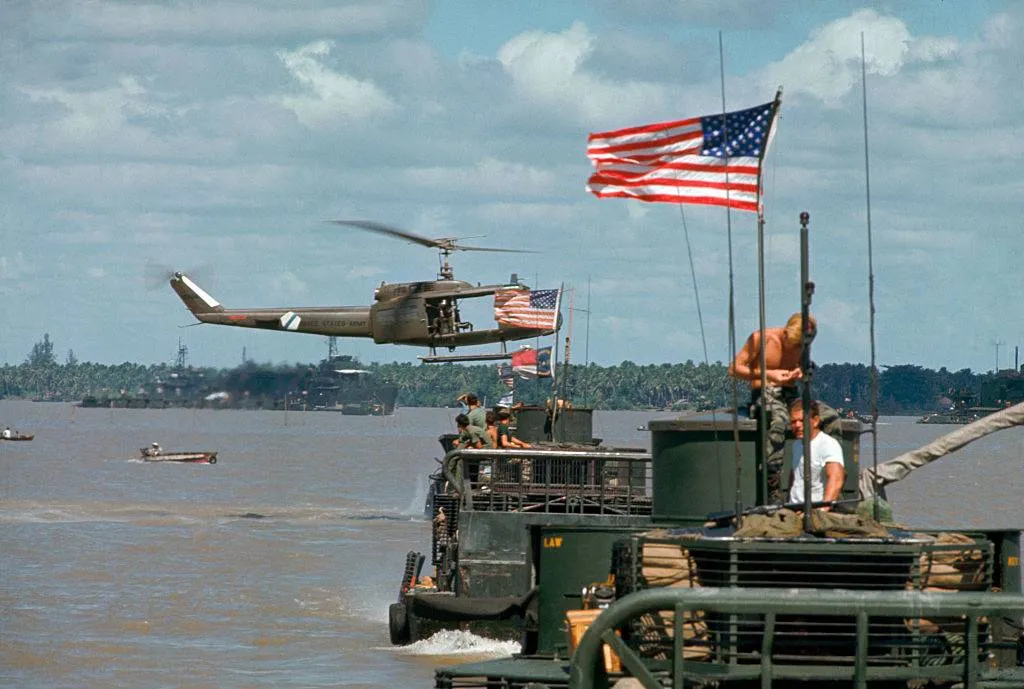
ADVERTISEMENT
Dengler reached down, grabbed the single rubber sole off Duane's foot and ran, not truly caring if he lived or died. he was followed by a hallucination of a bear which he said gave him the strength to carry on. He was essentially a walking corpse that had been stumbling through the jungle, plagued with hallucinations and on the verge of death.
ADVERTISEMENT
He recalls this as being some of the hardest times of his whole ordeal. Five days after Duane's death, on July 20, 1966, Dengler heard an American airplane overhead.
ADVERTISEMENT
















